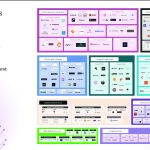
Vijay Eswaran’s Blueprint For Integrating Academic Knowledge with Practical Experience
As global economies grapple with persistent skills gaps and rising graduate unemployment, education systems worldwide are increasingly turning to an age-old solution: apprenticeships. These work-based learning models, once considered alternatives to academic education, are now being reimagined as essential complements to theoretical knowledge.
“A medical student has to go work in a hospital. Otherwise, all his years of study are virtually useless,” observes education entrepreneur Vijay Eswaran. “It is those two or three years where he’s virtually a medical intern that changes him into a doctor.”
This principle, long established in medical training, is gaining renewed attention across diverse fields as employers consistently report that graduates lack practical skills despite their theoretical knowledge.
The German Blueprint
Germany’s dual education system has emerged as the gold standard in this renaissance. Their model integrates classroom learning with structured workplace training, producing graduates with both theoretical foundations and practical competencies.
“The German universities and educational institutions perform like trade schools,” Eswaran explains. “They are working with various business partners who are private, be it BMW or Mercedes or whatever, Siemens. They bring in the people from there and give a foretaste to these students as to what they’re going to face when they go out there to work.”
The results speak for themselves. While youth unemployment plagues many European economies, Germany maintains one of the continent’s lowest rates at only 7.8% compared to much higher rates in countries like Spain and Greece. This success is often attributed to Germany’s dual apprenticeship system, which can be linked to facilitating a smooth school-to-work transition.
In the German system, around half of all school leavers enter the dual education system, where students typically spend 70% of their time in workplace training and 30% at college. Companies benefit from workers trained to their specific needs, while students graduate with marketable skills and often guaranteed employment.
Similar approaches have been adapted in Switzerland, Austria, and increasingly across Scandinavia, each tailoring the apprenticeship model to their economic and cultural contexts. In Switzerland, approximately 70% of students choose the apprenticeship path over a traditional university route, creating a strong pipeline of skilled workers. Austria’s system similarly engages about 40% of teenagers who enter apprenticeships at age 15 or 16 once compulsory education has been completed, with impressive retention rates of 94% of apprentices becoming employed after completion.
Beyond Europe
The apprenticeship renaissance extends well beyond Europe. Singapore has developed a comprehensive system of industry partnerships, where practical training is woven throughout post-secondary education rather than tacked on at the end. Singapore’s TVET (Technical and Vocational Education and Training) system is recognized for its forward-thinking approach with strong emphasis on technology and innovation, designed to be highly responsive to economic needs.
In South Korea, the government has invested heavily in “work-study dual systems” that combine classroom instruction with on-the-job training. South Korea adopted aspects of the German and Swiss dual apprenticeship models under President Park Geun-hye to address the country’s high youth unemployment rate and reform the education system. Since implementing vocational education reforms including the rise of Meister schools, graduates from vocational high schools have been more successful in navigating South Korea’s competitive job market as they possess skills in high demand in the economy.
Australia’s approach focuses on flexibility, with apprenticeships and traineeships available across education levels from secondary certificates to advanced diplomas, allowing for multiple entry points into industries. The Australian system is characterized by its ability to provide ‘fit for purpose’ qualifications that cater to specific industry needs while supporting flexible learning pathways with multiple entry and exit points.
The transformation extends beyond technical skills. Employers consistently report that students who participate in structured work experiences develop crucial soft skills like teamwork, communication, and problem-solving that purely classroom-based education often fails to nurture.
“Just the fact that they’re in the workforce, that environment changes them,” notes Eswaran. “When they come back to school after that six months or three months or whatever, their mentality has changed.”
Educators increasingly recognize that this mentality shift – understanding workplace culture, professional expectations, and real-world application – may be as valuable as the technical skills themselves.
However, implementing effective apprenticeship systems requires overcoming significant barriers. Creating meaningful industry partnerships demands resources many educational institutions lack. Companies must be convinced of the return on their investment in training. And in many countries, deep-rooted cultural biases favor traditional academic pathways over work-integrated learning.
Despite these challenges, the economic imperative is clear. As automation continues to transform job markets, the ability to adapt theoretical knowledge to practical challenges becomes increasingly valuable. According to the World Economic Forum’s 2023 Future of Jobs report, nearly 70 million new jobs will be created worldwide and 83 million will be eliminated by 2027, creating an urgent need for workers who can adapt to changing workplace demands.
“There’s no shortcut to this process,” Eswaran acknowledges. Yet the global trend toward reimagining apprenticeships suggests that the integration of classroom learning with workplace experience may be essential to preparing students for an increasingly unpredictable future of work.
The most successful models suggest that the question is no longer whether to combine theory and practice, but how to implement this integration most effectively for students, employers, and economies alike.












